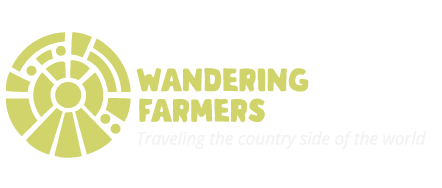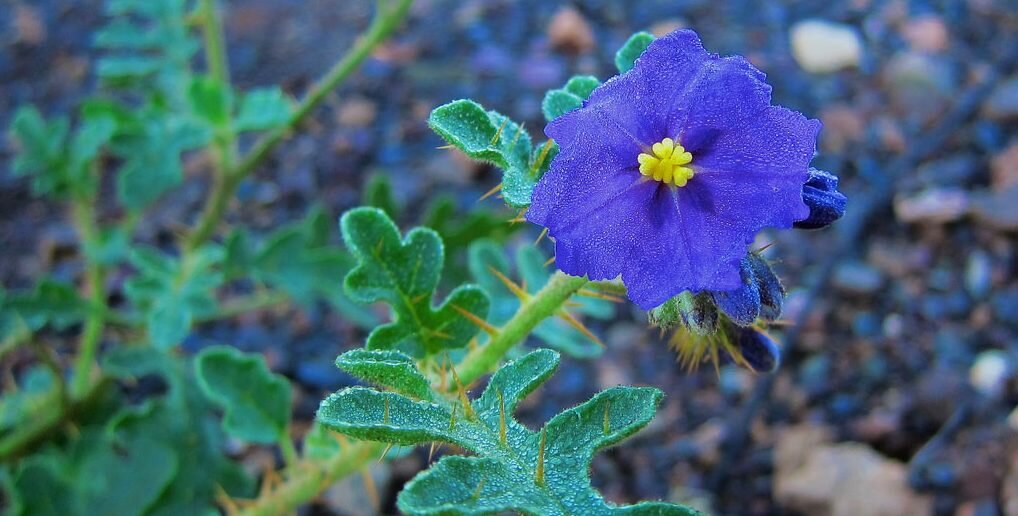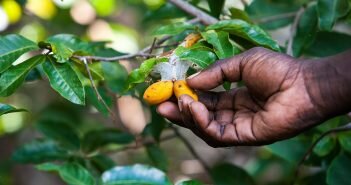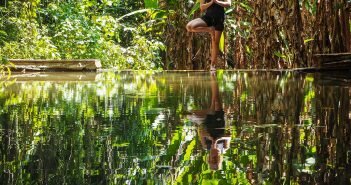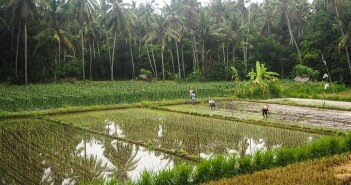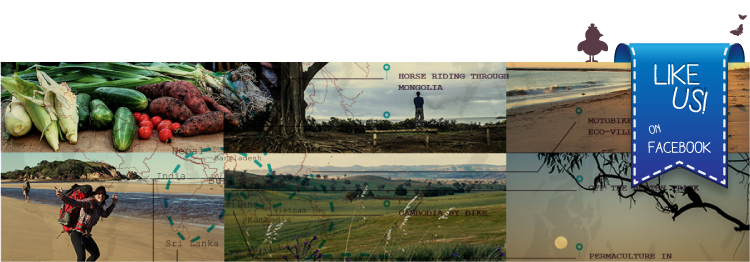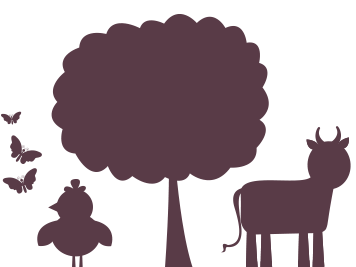Australian Native food, also called Bush foods or ‘bush tuckers‘ are a long list of well behaved edible native fruits, vegetables, herbs and nuts that are delicious, nutritious, water saving and environmentally friendly. Bush Tuckers have a central place in Permaculture because they are water efficient, drought resistant and provide habitat for native animals. Some of the species are also fire retardant and cultivating native participates in maintaining diversity and encourages to eat local. Here is a quick introduction to experiencing, eating growing Australian Native Food.
Bush foods are part of Australian culture and history and are essential for Australia’s ecosystem. In the wild, native plants and wildlife have formed a perfect partnership where food and shelter are exchanged for seeds distribution and pest control. Some bush foods are endangered, Kris Kupsch owner of the Botanic Garden Nursery in New South Wales says, “The two NSW davidson plums are listed as endangered under legislation”. Planting bush tuckers help to ensure their survival and animals that depend from them.
Experience Native Australian Food
The Balaangala at the Gap is a beautiful garden that aims not only to educate and promote bushfoods but also to connect people and share stories and ideas. The garden looks like a piece of wilderness or the bush after the rain but not like a conventional veggie garden. A painted wooden board at the entry acknowledges the custodians of this part of the country, the Yuggera and the Turrabul people.
On the left is the “tea time spot”, the most important place of the garden says Melinda Serico, an Indigenous Australian from the Gubbi Gubbi people. It is an island of grass surrounded by trees on the left and pavements carved with messages on the right. “The tea time spot” is fully furnished with a coffee table in the middle and rocks and stumps all around. A Mac pie appears and perch on one of the rocks, Melinda salutes the bird, “Her name is Maggie”. She lives here”.
Around the garden, the shapes and textures of the plants look almost scary. Armed with spikes or indented leaves, they must protect wonders. As you come closer those weird looking scrubs bear beautiful berries and flowers. All kind of berries lie around, the wombat, the quinine and the midyim berries, all edible. On the right of the tea spot, across the garden is an odd looking tree with a rough trunk and thick grasses on the top looking like a bad haircut. Melinda says, “It is a grass tree, a special tree”. Aboriginals used it to build tools using the spiky sticks of its hair and the strong glue of its trunk.
Behind, a little path of dead leaves reveals a huge and luscious spiky bush bearing lots of red fruits. “It is a native raspberry, our favourite one because we always get a good feed out of it,” says Melinda. On the sides of the track is a native ginger, a peanut tree, a native apricot and even a native grape, all bush tuckers. They may sound familiar but they taste or look different. A little further, a sandpaper tree, Melinda’s favourite because it is a good source of potassium. “With my liver problem I have to have a lot of potassium”, she says. Apart from producing a delicious fruit, it has medicinal and practical uses. The rough leaves and the bark are a treatment for flue, fevers, warts and diarrhoea and were even used to build ropes and nets.
The vegetation shrinks; the track stop and the wind brings the sweet and spicy smell of a cinnamon myrtle and then the sharp and fresh sent of a lemon myrtle. What an experience for the senses! This garden looks smells, sounds and feels unique. You don’t expect edible fruits or even vegetables growing in this rocky place. Yet, an amazing variety of food and flowers grows here and beautiful birds and butterflies made that garden their home.
Bush foods are probably already in your garden and around your neighbourhood. Melinda says, “We would be walking through town, stopping and picking berries off the Lilly Pillies and people would be looking saying, that’s poisonous! No it’s not we’d say”. Indigenous Australians have lived for more than 40,000 years by harvesting bush tuckers directly from the wild. There are more than 5,000 different species but most Australians would struggle to name one.
Louise Brennan, a teacher, built a native garden in Bald Hill School, Queensland to explain to children during history class that if the first settlers had taken the time to listen to the Aborigines, they wouldn’t have starved to death. Last year flood devastated the garden and it is just starting up again. Brennan says floods and fires are actually essential to certain bush foods. “The soil is more fertile after a flood because of the sediments deposited and there is more moisture in the ground” says Louise.
Eat Native Australian Food
Research shows that Bush tuckers could be among the healthiest food in the world. Dr Isabel Konczac, leader of the research on the health benefits of bush foods at Food ScienceAustraliaidentified twelve native Australian fruits that are exceptional sources of antioxidants.
“The native Illawarra plum is three times stronger in anti-oxidant activity than our sample of blueberries” says Konczac.
She explains in a media release of the CSIRO that plants produce anti-oxidants when exposed to stress due to extreme weather, which enable them to survive. The Northern Territory Department of Health and the University of Sydney analysed the nutrient content of bush foods and found that they contain high amounts of vitamin C, trace elements, antioxidants and proteins.
Bush foods are intense in flavour and bring new and unique aromas to all meals but they are sometimes a little bit tricky to process and too intense to eat it whole and raw. Bryant Wells from Tukka restaurant says,
“A lot of ingredients are hard to learn how to use because you have to do certain things to them to get the proper flavour out and a lot of the berries are very tart and the spices are earthy and dry”.
There are now a lot of spices readily available in supermarkets like the Wattleseeds, which have a coffee, chocolate and hazelnuts flavour or the Mountain pepper, stronger and more aromatic than true pepper. Though, many fruits and berries are sweet and delicious eaten straight out of the trees. My favourite is the native mint, a tiny ground cover with minuscule leaf that tastes like a candy. Its sweet peppermint flavour refreshes your mouth just like a bonbon.
Though, Bush foods can be toxic. Some should only be eaten after cooking or specific preparations and others are toxic only in certain seasons. Louise recently found a beautiful ground cover that look like a wild native strawberry growing out of nowhere in her garden. A deep red and juicy fruit that would make anybody salivate but “don’t judge a book by its cover”, this innocent little wonder might be more like the red apple in Snow White. Louise sent a picture to a herbarium to identify it. “Don’t dare try them, if you don’t know what they are,” she says. Fortunately it is not poisonous, it is called Potentilla Indica and it is considered a weed, edible though but not very sweet. “I think it is a pretty plant and I will grow it in a hanging basket,” says Brennan.
Grow Australian Native Food
Bush food gardens require less work than ordinary ones but they still need a little pruning and watering. This is especially important when the plants are young; so don’t believe in the myth of maintenance-free gardens. However, once plants are established they need little maintenance but respond well to care and attention. “If you leave them they won’t die off but if you want to produce more you have to look after them” says Wells. Water is a scarce resource and native plants conserve and use it in the most efficient way.
Brennan says, “We water once when we first plant them, that’s it”.
The good news is that in the bush food garden, weeding and digging are not needed as native plants die if their roots are disturbed. Don’t move dead branches or leaves either, as they will provide shelter for animals and food for seedlings. The only thing you should do is mulching because it retains moisture, stops foreign weeds and provides fertiliser. Choose local plants that are adapted to the soil and climate conditions of you area as they will be easier to grow and will produce more fruit. Don’t limit yourself with species that grow in your region. You will grow them in your garden so you can always protect them from frost in cool area and water them more in arid climate.
Let’s celebrate and protect Australia’s unique ecosystem. Growing and eating bush tuckers are an effective way to restore native habitat and preserve the animals that depends from it. Please share tips and info on where to find, how, what to grow as well as events on native Australian plants.
References
Mitchell, R., ‘Why we should commercialise and cultivate native plants’.
